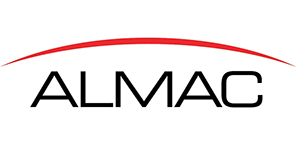This complexity arises from the distinct physiological and developmental characteristics of children and the stringent regulatory requirements that apply to paediatric medications. Key challenges include the following.
Dosing accuracy and precision: Children, particularly infants and toddlers, require precise dosing to ensure safety and efficacy. Analytical methods must be capable of accurately measuring very small doses, which can be challenging owing to the potential for variability in the manufacturing process.
Taste and palatability: Ensuring that paediatric medications are palatable is crucial for compliance. This requirement introduces additional complications to the analytical method development because taste-masking agents and other excipients may interfere with the analytical measurements.
Formulation stability: Paediatric medications must remain stable under various conditions, including temperature and humidity. Developing analytical methods to accurately assess the stability of these formulations with time is crucial.

Regulatory requirements: Paediatric drug development is subject to stringent regulatory requirements. Analytical methods must demonstrate bioequivalence and bioavailability in paediatric populations to ensure the product’s safety and efficacy.
Age-appropriate formulations: Children possess unique physiological and metabolic profiles compared with adults. Analytical methods must account for these differences to ensure the drug’s optimal absorption and metabolism in paediatric patients.
Manufacturing consistency: Ensuring consistency in the manufacturing process is critical for paediatric solid dose products. Analytical methods must be robust enough to detect any variations in the production line that could affect the final product's quality.
Safety and efficacy: Paediatric medications must be both safe and effective for children. Analytical methods must identify any potential impurities or contaminants that could pose a risk to children’s health.
Paediatric drug forms are specially designed to ensure that medications are safe, effective and easy to administer to children. Common forms include
- tablets and capsules
- oral liquid formulations
- oral dispersible tablets
- effervescent tablets
- inhalable formulations.
Advanced analytical techniques for paediatric solid dose products
To accurately measure the small doses required for paediatric solid dose products, several advanced analytical techniques are employed.
High-performance liquid chromatography (HPLC) is a powerful technique used to separate, identify and quantify components in a mixture. It is highly sensitive and can detect very low concentrations of active pharmaceutical ingredients (APIs) in paediatric formulations. HPLC is widely used for its accuracy and precision when measuring small doses.
Mass Spectrometry (MS) provides detailed information about the molecular weight and structure of compounds. When combined with HPLC (LC-MS), it offers an even more powerful tool to quantify small doses in paediatric formulations. LC-MS is known for its high sensitivity and specificity, making it an ideal way to detect trace amounts of APIs.
Ultra-performance liquid chromatography (UPLC) is an advanced form of HPLC that operates at higher pressures, allowing for faster and more efficient separations. It offers improved resolution and sensitivity compared with traditional HPLC, making it suitable to measure small doses in complex paediatric formulations.
Fluorescence spectroscopy measures the fluorescence emitted by a compound when exposed to light. It is highly sensitive and can detect very low concentrations of APIs. This technique is useful to analyse small doses in paediatric formulations, especially when the API has fluorescent properties.
Conclusion
The development of analytical methods for paediatric solid dose products is a complex and multifaceted process that requires a thorough understanding of paediatric physiology, precise dosing capabilities and adherence to stringent regulatory standards.
Advanced analytical techniques provide the sensitivity and precision required to accurately measure small doses. By addressing these challenges, pharmaceutical companies can ensure that their paediatric medications are safe, effective and tailored to children’s unique needs.

